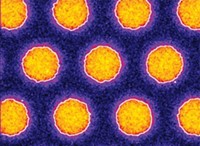Advertisement
Grab your lab coat. Let's get started
Welcome!
Welcome!
Create an account below to get 6 C&EN articles per month, receive newsletters and more - all free.
It seems this is your first time logging in online. Please enter the following information to continue.
As an ACS member you automatically get access to this site. All we need is few more details to create your reading experience.
Not you? Sign in with a different account.
Not you? Sign in with a different account.
ERROR 1
ERROR 1
ERROR 2
ERROR 2
ERROR 2
ERROR 2
ERROR 2
Password and Confirm password must match.
If you have an ACS member number, please enter it here so we can link this account to your membership. (optional)
ERROR 2
ACS values your privacy. By submitting your information, you are gaining access to C&EN and subscribing to our weekly newsletter. We use the information you provide to make your reading experience better, and we will never sell your data to third party members.
Materials
Espionage at the Atomic Scale
Microscopy probes nanofiber growth process with angstrom resolution
by Mitch Jacoby
February 2, 2004
| A version of this story appeared in
Volume 82, Issue 5

Like intelligence agents armed with high-tech surveillance gear, scientists in Denmark are using sophisticated lab tools to uncover the clandestine side of chemical reaction dynamics related to the growth of carbon nanofibers. The atomic-scale spying has revealed surprising nanoparticle behavior that may prove useful in understanding a wide range of catalytic surface reactions and other molecular processes.
Growing carbon nanofibers by decomposing hydrocarbon gases on solid catalysts has intrigued researchers for decades. But probing the fundamental steps that drive the growth process has proven difficult to carry out with high resolution, in part because of the high temperature and pressure required to sustain the reaction.
Now, researchers at catalyst manufacturer Haldor Topsøe and at the Technical University of Denmark, both in Lyngby, have tracked the carbon nanofiber growth process in real time and in unprecedented spatial detail. Using a specially designed transmission electron microscope, the team, which includes Stig Helveg, physics professor Jens K. Nørskov, and their coworkers, exposed nanometer-sized nickel particles dispersed on MgAl2O4 to a methane-hydrogen mixture at roughly 500 °C. They recorded the results in angstrom-resolution videos [Nature, 427, 426 (2004)].
The images capture a lively reaction scenario in which nanofiber growth is seen to be mediated by continuous and sudden changes in the shape of the nickel particles. Reactions of the gas on the catalyst cause the approximately 10-nm spherical particles to become highly elongated, then abruptly return to a spherical shape, while nanofibers grow spontaneously from the particle's surface.
From a detailed inspection of the images and quantum mechanical calculations, the researchers conclude that nucleation and growth of the fibers' graphene layers occur at tiny defects in the nickel crystals known as single-atom step edges. The angstrom-sized imperfections are observed to form and then disappear repeatedly during the course of the reaction. Based on the experimental and computational results, the researchers propose that the growth mechanism depends on surface diffusion of carbon and nickel atoms.
Commenting in the same issue of Nature, Pulickel M. Ajayan, a professor of materials science and engineering at Rensselaer Polytechnic Institute, remarks that the study "has overcome some major experimental stumbling blocks to provide the first direct glimpses of nanofibers as they grow." Ajayan notes that the experiments show the importance of shape transformations in particles used as nanoscale growth catalysts. He adds that the work "should lead to better control over fiber synthesis for nanotechnology."






Join the conversation
Contact the reporter
Submit a Letter to the Editor for publication
Engage with us on Twitter